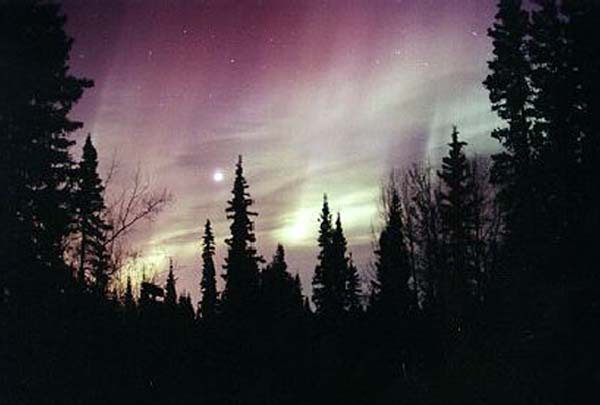
|
Explanation: A night sky can glow in fascinating ways. Through a clearing in the woods, the pictured sky above Alaska shines by reflected light from a nearby city, by the brightness of the Moon, and by aurora. The night sky in or near a city appears to contain relatively few stars because lights there reflect off atmospheric particles, hiding stars in a diffuse glow. The bright Moon also creates a diffuse sky glow, although much less bright than the analogous blue-sky glow created during the day by the Sun. Particles from the Sun crashing into the Earth's atmosphere are seen here as bands of aurora. These glows also illuminate visible clouds. Auroral displays are becoming more frequent as the Sun approaches Solar Maximum.
|
January February March April May June July August September October November December |
| ||||||||||||||||||||||||||||||||||||||||||||||||
NASA Web Site Statements, Warnings, and Disclaimers
NASA Official: Jay Norris. Specific rights apply.
A service of: LHEA at NASA / GSFC
& Michigan Tech. U.
Based on Astronomy Picture
Of the Day
Publications with keywords: aurora - trees - sky - Moon
Publications with words: aurora - trees - sky - Moon
See also:
- APOD: 2025 August 23 B Fishing for the Moon
- APOD: 2025 July 20 B Lunar Nearside
- APOD: 2025 June 28 B Lunar Farside
- APOD: 2025 June 20 B Major Lunar Standstill 2024 2025
- APOD: 2025 June 18 B Space Station Silhouette on the Moon
- APOD: 2025 April 22 B Terminator Moon: A Moonscape of Shadows
- Moon Near the Edge
